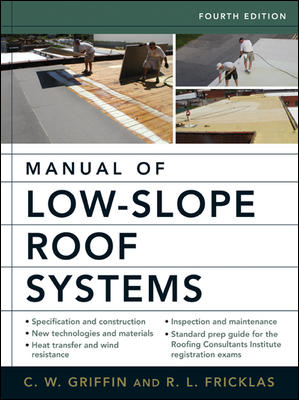If You Lost Everything You Owned: Using Asset Insulation in Your Roofing Company Exit
As a potential defendant in a civil case, it is important to understand the process of a plaintiff’s attorney.

It’s no surprise that in today’s society civil litigation has become an ever-increasing threat to business owners and affluent individuals.
It’s no surprise that in today’s society civil litigation has become an ever-increasing threat to business owners and affluent individuals. Many owners don’t realize it’s possible to have a legal judgment assessed against them for an event they didn’t participate in, or of which they were unaware.
According to the National Center for State Courts, nearly 20 million lawsuits are filed every year in the U.S. Many of these lawsuits are regarded as “frivolous,” meaning they have little merit based on facts.
Frivolous lawsuits typically have the intent to intimidate defendants and seek cash settlements instead of a trial. U.S. Sen. Chuck Grassley, R-Iowa, the ranking member of the Senate’s Judiciary Committee and a proponent of lawsuit abuse reform, sponsored the Lawsuit Abuse Reduction Act of 2011. It addresses meritless litigation, and Grassley says the annual direct cost of U.S. tort litigation exceeds $250 billion.
Why have lawsuits become such big business? There are two primary reasons: The first reason is the way in which litigators are compensated. The second is that many jurors are not business owners or affluent individuals and, as such, seek to right the wrongs of society by making examples of a certain few. Let’s look at each of these situations individually.
The Legal Environment
The reasons for the overwhelming lawsuit numbers are widespread. Creative lawyers have expanded the liability theory to include “what you could or should have done to foresee the damage that occurred to my client.”
This means that the plaintiff should have foreseen that the harmful action would have, or could have occurred, and, as such, the business owner should have taken precautionary measures. While many business owners take precautionary measures to eliminate potentially harmful situations, is it reasonable to say that one could foresee all situations? When these accidents happen, how will you be protected?
In addition, legal representation rates may vary anywhere from $150 an hour to $1,000 an hour or more. This provides a business incentive to litigators to seek out creative ways to promote litigation. TV and other media litigators’ ads are a testament to this incentive. Contingency compensated litigators typically get one-third or more of the eventual settlement or award in a case without asking for a fee up front.
“Sue now, pay later” is not uncommon. This approach to “joint venture” litigation is sometimes helpful to a plaintiff with limited funds and, therefore, limited access to competent counsel. Often this joint venture approach facilitates litigation that may otherwise not have moved foraward. The key point is that few contingency litigators would agree to take on a case with such a payment arrangement if they weren’t comfortable that “deep pockets” can somehow be tied to the perceived damages being sought. This is where perceived affluence is a potential target for litigation connection, even if only remotely connected.
It’s important to understand lawsuits undergo an economic analysis before a case begins — how much cost, time and effort will need to be invested, chances of winning the case, and what assets are available to pay a judgment.
Let’s look at a relatable example: You’re driving your car when suddenly you’re hit from behind. The driver who hit you is unemployed and allowed his car insurance to lapse. No lawsuit is needed, regardless of fault, because there’s nothing to gain.
Now, if we substitute the driver of the car who hit you with an employed professional driving a new BMW, has insurance and lives in a large estate, the case complexion changes, despite the fact that all other circumstances are equal. The difference is the perception of getting paid. The adage “you can’t get blood out of a stone” bears some weight here.
As a potential defendant in a civil case, it’s important to understand the process a plaintiff’s attorney will undergo.
Righting Society’s Wrongs
Jurors have taken to right the wrongs of society. As a juror, there’s a perception that big business has deep pockets and has the ability to pay the victim to compensate for the harm that was created. To make matters worse, these awards are directed to not only compensate the individual harmed, but to punish the party who caused the action. The following are just a few recent cases and the judgments that were delivered by juries:
May 2012, Corpus Christi, Texas: A jury awarded $24 million to a woman struck by a cola delivery truck when the driver was talking on his cell phone. The jury awarded $10 million in punitive damages and $14 million in actual damages. Punitive damages are explicitly excluded from commercial general liability coverage.
2011, Polk County, Fla.: A jury awarded $65 million to the driver of a car that was broadsided by an 18-wheeler truck, leaving the 19-year-old driver of the car with brain damage.
March 2012, Sacramento, Calif.: A former hospital employee claimed she was subjected to filthy conversations among physicians and staff about their sex lives, unwanted sexual advances and demeaning comments, and frequent comments alluding to her heritage. After 11 days of trial, the jury deliberated two days before returning a guilty verdict and awarding the plaintiff a $167 million judgment.
In each of these cases, your workers and/or equipment or vehicles could easily be substituted as the causes of injuries.
When confronted with such litigation, many are quick to turn to their commercial general liability and property casualty insurance policies. However, there may be exceptions to policy coverage. Because of the size of these awards, it begs the questions: Who carries $167 million of liability insurance, and who would sell you that much insurance?
What Do I Do?
Making yourself unattractive to lawsuits should be your first priority. This can be accomplished by implementing asset-insulation strategies to your business and personal lives.
The core of asset insulation is to position assets and finances in such a way to make it difficult for a creditor to reach those assets. Techniques to reduce risk are common sense (liability insurance coverage and risk mitigation techniques) and should be employed. However, the chances of considering all possible contingencies, covering all risks with insurance and taking all precautions are remote.
Irrespective of a successful defense, merely being in court causes the defendant to lose due to the time, legal cost and distraction from business activities. Therefore, the business owner must go beyond reducing risk and insulate his assets to reduce the incentive to sue. In the event a suit does occur, the asset insulation will limit or eliminate a plaintiff’s ability to reach the business owner’s assets.
Asset protection is not a specific technique or product but rather the purposeful structuring of assets to limit liability exposure, make assets difficult to attach and segregate risk.
There are some common misconceptions regarding C and S corporation liability protection. As a matter of law, assets inside a C or S corporation are attachable by a plaintiff. Furthermore, if the plaintiff’s attorney can find sufficient evidence to pierce the corporate veil, assets outside the corporation may also be attached.
This group of assets would generally include your personal assets. Many times, techniques are used in combination to enhance protection and benefits. In many cases, a creditor may place a lien on assets owned personally, jointly, or through partnership or corporation, but the statutes governing preferred entities preclude a lien on entity assets for claims against the owner.
Thus, achieving asset protection usually involves using entities that have insulated characteristics, (e.g. limited liability companies, limited partnerships, some trusts). Certain trusts, limited liability companies and limited partnerships provide formidable impediments to attachment. Since a plaintiff cannot access the assets, there is a good possibility that litigation can be discouraged from the onset. In many cases, protection against liability exposure can be further enhanced by separating the distinct categories of assets to segregate the risk among those assets.
Segregation of risk involves separating categories of assets — such as equipment, vehicles, employees and real estate — that may generate a liability into separate “containers.” This will prevent one asset category from being targeted due to the litigation that occurred by another asset category, thus minimally disrupting the organization.
It should be noted that some assets are not suitable for entity ownership and, therefore, asset insulation. This often includes personal residences, properties with existing mortgages, receivables, etc. If one uses an engineered loan against the asset, the equity in the asset can be reduced to such a low level that it would be unattractive to a creditor (this is often referred to as “equity stripping”). In a foreclosure, even if a creditor did pursue a claim, the debt to the first lien holder would be paid first and would separate equity from a creditor.
The most effective planning involves integration of overlapping areas that affect a family’s net worth:
- As set protection (insulating against claims from any source)
- Estate planning (incapacity, death disposition, reduction of probate, reduction of death taxes, guardianship, managing inheritances)
- Tax planning (leverage, income tax shifting, maximum use of transfer credits, coordination of federal/state death taxes)
- Business planning (exit strategy, key person retention, company structure, perpetuation)
- Insurances (shifting risk, funding tax burdens), asset titling and entity structure.
While most business owners operate their businesses in a manner that promotes professionalism, quality and safety, accidents do occur. And while many of those same owners have taken what may appear to be appropriate steps toward managing risk against lawsuits, they’re operating without a safety net. Many owners don’t realize that it’s possible to have a legal judgment assessed against them that far exceeds their net worth, or for an event that they did not participate in or were unaware of.
Asset insulation strategies play a significant role in managing business owners’ and affluent individuals’ risk by protecting their assets from creditors and predatory lawsuits. For many, these strategies are just as important, if not more so, than estate or financial planning.
There are numerous key points and benefits to remember about asset insulation. These benefits include:
- Render a potential defendant unattractive to litigate by removing the financial gain incentive
- Insulate major assets from predatory lawsuits and other creditors
- Promote settlement, thereby leveling the playing field
- Integrate with estate planning and tax minimization objective without gifting assets or losing control of those assets.
A lawyer who is experienced and fully understands the complexities of asset insulation can provide you with the education and advice necessary to properly insulate your assets from unnecessary claims. Creating an LLC is not enough. Legal documents must be drafted in a manner that will include the appropriate language and structure to offer the protection sought.
In addition, a policy review from a qualified property and casualty agent should be conducted to address the limits of your CGL policy, including any exclusions of which you need to be aware.
After you have educated yourself about the potential pitfalls and areas of exposure, a comprehensive risk management strategy should be employed. The risk management approach should focus on insulating personal and business assets, which many times can be coordinated with estate planning needs, as necessary.
The key points and benefits to remember about asset insulation are that, if properly implemented, they can provide business owners and affluent individuals with an additional layer of protection against creditors and predators beyond their existing liability.
Looking for a reprint of this article?
From high-res PDFs to custom plaques, order your copy today!





.jpg?height=200&t=1644853713&width=200)


